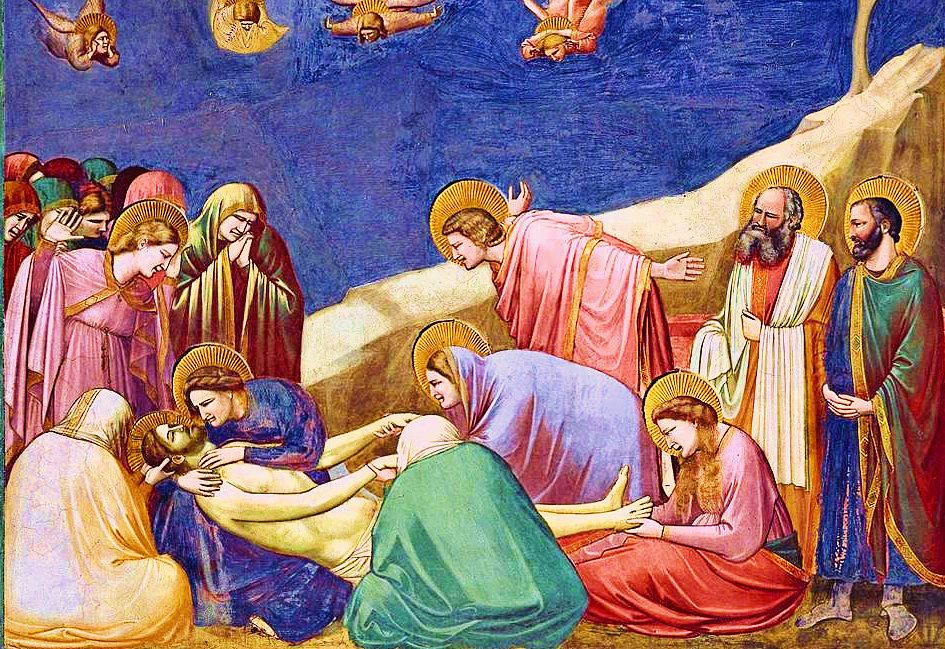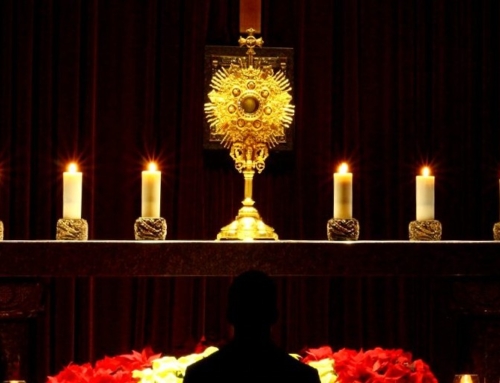Eleven of the twelve Apostles betrayed, denied, or abandoned the Lord Jesus in His moment of deepest need – Calvary.
Mary, His mother, stood by Him until the bitter end.
According to John’s Gospel (19:25-27), Our Lady stood by the Cross of Jesus during the entire length of His suffering. Tradition adds that she was even there when His disciples took her Son down from the Cross and laid Him in the tomb.
It is not surprising that, over the centuries, Christian imagination has entered into the passion of Mary standing at the Cross (in Latin the phrase is Stabat Mater) as a way of deepening the Church’s understanding of the meaning of Calvary.
A believer wonders: What was Our Lady thinking while she stood there? How did she experience her Son’s suffering? Was this the fulfillment of the prophecy of Simeon, thirty years before, who had predicted that “a sword would pierce [her] heart” (Luke 2:35)?
There is much to contemplate.
A sublime hymn from the Middle Ages
Sometime during the Middle Ages a very talented poet of the Latin language composed a poem called the Stabat Mater Dolorosa (Sorrowful Mother Standing at the Cross), which has been handed down in the devotional life of the Church for at least eight or nine centuries.
No one knows exactly who composed the poem but the most likely guesses are St. Bernard of Clairvaux, Pope Innocent III, or a Franciscan named Jacopone da Todi, all of whom are dated to the 12th and 13th centuries. The poem may even have its roots in the medieval tradition of the Marienklagen (Marian laments) which were pious reflections on the suffering of Mary.
The Stabat Mater is fundamentally a pious poem written in a sing-song style anyone can grasp. It contains twenty verses of three lines apiece, which conform to the meter AAB CCB, rhyming sequences that aid memorization.
When set to music, the poem becomes a hymn. Despite the fact that it originated in the Middle Ages, it is not classic Gregorian chant or a motet a style of music that emerged centuries later. The Stabat Mater is a simple hymn.
The praying church
Since the Middle Ages, the Stabat Mater has struck a deep chord in the liturgy and piety of a praying Church. Did you know that there are over 300 composers who have set the poem to music? There is a fascinating website called, if you can believe it, The Ultimate Stabat Mater Website (!) that documents all of them and gives quite a detailed history of the poem’s transmission and verse variations for anyone who may be interested.
The Church in recent centuries has even made the Stabat Mater the standard musical accompaniment to the public celebration of the Stations of the Cross during Lent.
Our first video features the most common rendition of the Stabat Mater (in Latin) as you might hear it in your parish church on Fridays in Lent, but the video contains English subtitles.
The second is a sublime arrangement by a Polish choral men’s group named Jerycho which will take your breath away if you have nine and a half minutes to listen. Again, there are English subtitles.
May Our Lady accompany you on your Lenten journey, and may you find yourself at her side at Calvary contemplating the mystery of our salvation.
Traditional performance (duration, 5:23)
Jerycho performance (duration, 9:28)
Soul Work
Have you ever prayed the Stations of the Cross during Lent or at any other time? If not, I hope you will find time this Lent to go to a church or a shrine and walk the Way of the Cross. (The Stations are sometimes called the Via Crucis, the Way of the Cross.)
These fourteen Stations retrace the very way that Christ walked in His passion, from the moment He was condemned to death by Pilate to the moment He was laid in the tomb.
The Stations are a way to contemplate – in a very personal way – the ultimate sacrifice of the Paschal Lamb on the Cross for our sins. Our Lady makes her presence known at the fourth station and again at the end, from the eleventh to the fourteenth stations, where she shares every moment of His blessed Passion.
Give yourself time to pray these stations. In a normal, contemplative rhythm they will take half an hour. Alternatively, you could pray the Stations by reading the Way of the Cross written by any number of saints and spiritual writers who have composed their own reflections to assist the faithful in entering more deeply into the spirit of Lent.
Contemplation of the stations will draw you in and give you insight into what He suffered. More than anything, you will understand the union of suffering of the Mother who walks with you through them all and stands with you at Calvary, contemplating the Savior of the world.




Leave A Comment